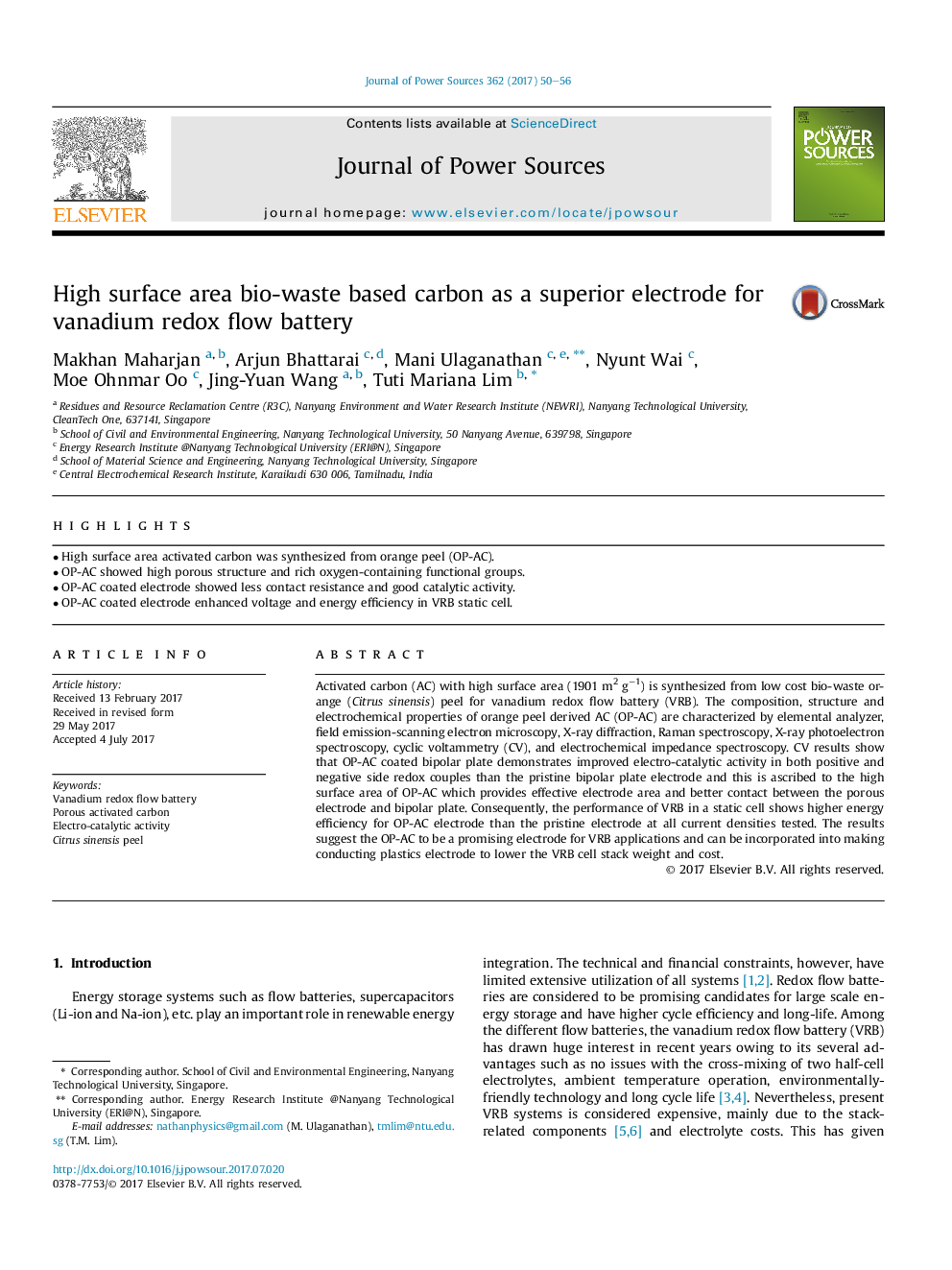| Article ID | Journal | Published Year | Pages | File Type |
|---|---|---|---|---|
| 5148829 | Journal of Power Sources | 2017 | 7 Pages |
Abstract
Activated carbon (AC) with high surface area (1901Â m2Â gâ1) is synthesized from low cost bio-waste orange (Citrus sinensis) peel for vanadium redox flow battery (VRB). The composition, structure and electrochemical properties of orange peel derived AC (OP-AC) are characterized by elemental analyzer, field emission-scanning electron microscopy, X-ray diffraction, Raman spectroscopy, X-ray photoelectron spectroscopy, cyclic voltammetry (CV), and electrochemical impedance spectroscopy. CV results show that OP-AC coated bipolar plate demonstrates improved electro-catalytic activity in both positive and negative side redox couples than the pristine bipolar plate electrode and this is ascribed to the high surface area of OP-AC which provides effective electrode area and better contact between the porous electrode and bipolar plate. Consequently, the performance of VRB in a static cell shows higher energy efficiency for OP-AC electrode than the pristine electrode at all current densities tested. The results suggest the OP-AC to be a promising electrode for VRB applications and can be incorporated into making conducting plastics electrode to lower the VRB cell stack weight and cost.
Related Topics
Physical Sciences and Engineering
Chemistry
Electrochemistry
Authors
Makhan Maharjan, Arjun Bhattarai, Mani Ulaganathan, Nyunt Wai, Moe Ohnmar Oo, Jing-Yuan Wang, Tuti Mariana Lim,
